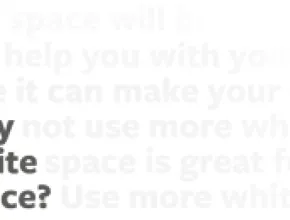The multitude of tasks, issues and concerns that come with meeting planning can be incredibly taxing on the mind and the body. So it may come as no surprise that the position has been officially listed in CareerCast’s annual “10 Most Stressful Jobs”—right there with firefighters and police officers—for several consecutive years.
In 2019, the role of event coordinator came in sixth place.
In the spirit of National Stress Awareness Month in April, we checked in with two mindfulness and stress-reduction experts who work in the meetings industry to get their perspectives on innovative ways to slay—or at least tame—the stress dragon in every planner.
7 Stress-Reduction Strategies From Lee Papa

Lee Papa is a mindfulness speaker, trainer and author. She has been recognized and praised within the meetings and events industry for creating the Mindfulness LoungeTM, well known as the Be Well Lounge at IMEX America in Las Vegas, which she has spearheaded since 2015. She also provides keynote speeches and facilitates everything from mindfulness training breakout sessions to corporate employee training and leadership workshops.
Additionally, she offers the online coaching program Mindful MakeoversTM and is the author of The Roadmap to Living Mindfully and The Temple of All Knowing, as well as meditation CDs.
- Start Your Day Mindfully, With Non-Judgement and Awareness: Begin your day in quiet contemplative awareness of what is, not on your phone checking emails. Make sure you are not in resistance and pushing against what may not be optimal in your day or your life. Adjust your perspective if you are feeling that resistance.
- Meditate, Surrender and Let Go: If you are a beginner, start with five minutes of a guided meditation to prime the pump. Don’t expect to quiet a busy mind immediately. It’s a “practice.” Praise yourself for the five minutes and do it again the next morning. And the next.
- Set the Intention to Be Your Optimal Self: Then explore it. What is the intention, the theme of your day, your work, your life? Are you in service? Are you in joy? Or are you there for the paycheck? Getting clear on a positive intention will alleviate resistance and the stress it causes.
- Use Visualization: Picture what your day will look like when you do not have resistance and your intention is positive. Tap into the movement of that visual in your meditation and separately. Can you picture it?
- Practice Non-Attachment: When we hold on to things, we suffer. When we practice non-attachment to outcomes, stuff, situations and people, we are liberated. Surrender to the highest and best outcome for all people concerned.
- Expect the Unexpected: Tap into the feeling of when you are anticipating something exciting—perhaps a vacation, a call from someone in a new relationship, a promotion or an offer for the job you wanted. That energy of the feeling will help propel your day in a more positive way.
- Embrace Change: There is nothing more constant than change. We need change to evolve and to move into the reality that we are visualizing and intending. Resisting change and pushing against it creates more stress and a yo-yo effect of highs and lows.
[Related Content: Nova Browning Rutherford Gets Real About Self-Care]
3 Ways to Deal With Stress From Holly Duckworth

Holly Duckworth is a speaker, mindful leadership advisor and author. She offers keynote speeches and leads workshops focusing on mindfulness and leadership with the goal of helping her clients create peace, presence and profits.
Duckworth is the producer and host of the Everyday Mindfulness Show, a contributor for The New York Times, a columnist for several industry publications and the author of numerous books, including Everyday Mindfulness: From Chaos to Calm in a Crazy World.
- Name It: Recognize that you are feeling stress. We live in a world that says you should numb stress and not feel it. Resist the desire to do so. Recognize that you may be taking on too much or putting your attention on anything but the present moment.
Stress happens when you put your attention on anticipatory grief of the future or fear from the past. The stress you are feeling is normal and natural.
Our world conditions us to keep pushing through it, but this only magnifies stress and stores it in our minds and bodies No matter how hard it is, pause to recognize the stress.
- Claim It: We cannot cure something for which we don't accept responsibility. Claim it, meaning give yourself a moment to authentically experience the way you are feeling.
Give yourself permission to feel stressed and be authentically you.
- Choose It or Don’t: Once you have paused long enough to recognize that you are stressed, ask yourself, "Do I want to continue to feel this stress?" If the answer is yes, move on and know you will suffer the consequences—often in health, relationships or financial challenges. Or choose to tame it.
Take a moment to mentally move the stress out of your brain, shoulders and stomach by taking a soothing breath and visualizing the stress exiting your body. Or go to the restroom and wash your hands. As you are washing, visualize the stress washing down the drain. When you are ready, go back to work with a renewed sense of calm.
Additional ways to tame stress include allowing yourself to receive help and not rewarding busyness as a company or meeting planning team. Instead, reward calm.
By implementing these mindfulness-based approaches to dealing with stress from Lee Papa and Holly Duckworth, you’re one step closer to conquering the anxiety dragons within.
[Read This Next: Stress Management Tips for Independent Meeting Planners]







